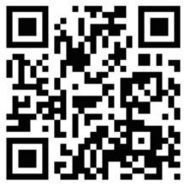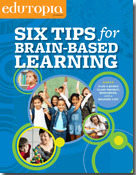An essential part of online research is the ability to critically evaluate information. This includes the ability to read and evaluate its level of accuracy, reliability and bias. When we recently as
Get Started for FREE
Sign up with Facebook Sign up with X
I don't have a Facebook or a X account
 Your new post is loading... Your new post is loading...
 Your new post is loading... Your new post is loading...
|
Kathy Lynch's curator insight,
March 23, 2014 1:25 PM
Ideas to expand thinking on current assessments, particularly for those who do not test well. Thx Beth Dichter! 
Rosemary Tyrrell, Ed.D.'s curator insight,
March 24, 2014 1:46 PM
As teachers today we are told that we must teach our students and help them construct "enduring understanding", providing them with the ability to transfer knowledge from one subject area to another subject area. We are also told that we should personalize education, requiring us to know the strengths and weaknesses and incorporate this into our lessons. And let's not forget that we must also assess our students. How can we make our assessments help students with content retention? This post focuses on this question, and provides five suggestions on ways to do this. The first three suggestions are: Tests Where Notes or Textbooks are PermittedTake-Home TestsStudent-Made TestsThese types of tests may take more time to create but they have the ability to be written so that students have to do more than memorize information. There is more information on this in the post. The next suggestion is: Projects Pre-Approved by the TeacherThis requires that students demonstrate mastery of the subject. This will require the student to create (a 21st century goal) and additional information is in the post, including a discussion of what this might look like. The final suggestion is: Revisions and Retests to Build SkillsetsThis section discusses what we may do to help out student build their skillsets through feedback and opportunities to construct accurate information. As you read this post you may begin to consider alternative ways to assess your students that help them with content retention. |













Yet research tells us that middle schoolers:
* "are more concerned with content relevance than with credibility."
* "rarely attend to source features such as author, venue or publication type to evaluate reliability and author perspective.
* "their judgments are often vague, superficial and lack reasoned justification."
What should we do?
1. Teach the Dimensions of Critical Thinking - Relevance, Accuracy, Bias/Perspective and Reliabilty
2. Model and Practice - Use demonstration lessons to focus on the four dimensions above
3. Prompting - Provide written prompts to help guide students; have them cross-check claims through more than one source
4. Help them become healthy skeptics
More information on these factors may be found in the post.